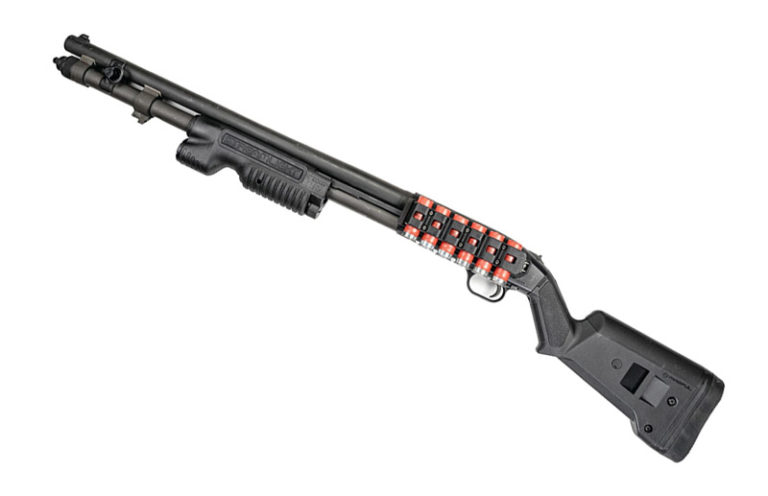
It might be time to get a new shotgun for home defense, because your grandpa’s bird gun is not the ideal home defense shotgun setup.
If you grew up in a home with firearms, chances are good there was a trusty pump-action shotgun somewhere in the house, likely leaning up behind a door. Versatile, powerful and easier to shoot than a pistol, the scattergun was a natural choice during a time when AR-15s weren’t nearly as common.
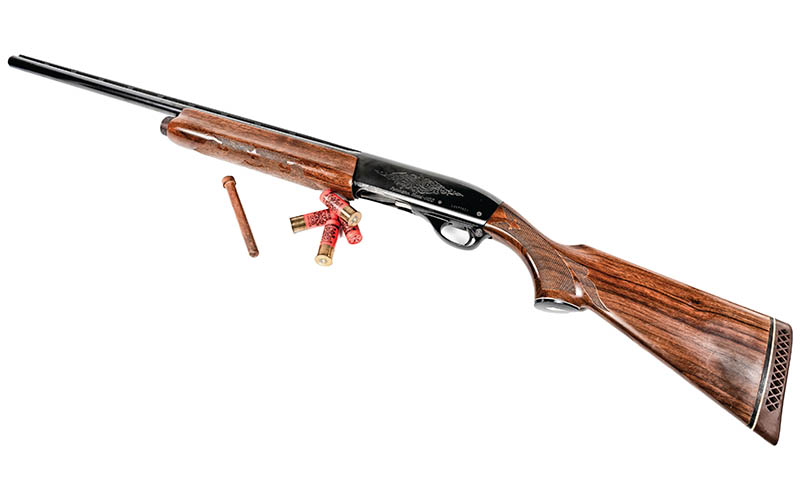
As a direct result of the shotgun prevalence, there’s no shortage of misunderstandings and gun shop lore when “The Gauge” comes up. Many misconceptions about shotguns stem from how shot performs when hunting birds. Don’t buy into lore like, “you don’t even need to aim it, just point it down the hall,” that so often echoes off gun store walls.
Shotguns seem reasonably straightforward compared to a handgun, but the reality is they need to be practiced with just as often as any other firearm. Learning to keep the gun’s limited ammo capacity topped off—or managing the hefty recoil—takes range time.
Scattergun Misconceptions
You Don’t Need To Aim
The misunderstanding that pointing the barrel in the general direction of a threat almost certainly has roots in bird hunting, where hundreds of pellets are launched at a target 25 yards away. At that distance with general sporting loads, the pattern has a sizable spread. Take that range down to typical home distances of feet rather than yards—with a limited pellet count of 00 buckshot—and your shot pattern is going to be significantly tighter. You absolutely need to aim with a shotgun; they aren’t magic.
As Soon As They Hear It Rack, They Run Away
Quit watching so much TV. Plus, a legally armed civilian should never use a firearm to intimidate through sight or sound; the act of displaying the fact you’re armed is often a legal issue. Could the sound of a shotgun being racked send someone running? Maybe. Retired law enforcement officer Darryl Bolke of Hardwired Tactical has shared, on multiple occasions, that in his first on-the-job shooting, both of the carjackers clearly heard him rack his 870 when he got out of the car. Did that stop the carjackers? They clearly didn’t scare easily.
Anyone Can Use A Shotgun
Yes … but also, no. Between the substantial recoil and ergonomic issues, handing a shotgun to someone who hasn’t put in some range time can be a recipe for disaster. Most shotguns on the wall at your local gun store are fitted with a stock that’s better suited for hunting than in a defensive role. They seem to work fine on a square range, but the second you shoot from an odd position, that reach to rack the gun might be too long and result in a short stroke.
Choose A Platform
Do you need the latest tactical shotgun to effectively defend your home? Nope, but the ability to add things that make using the gun easier sure is nice. Plenty of folks have successfully used a hunting shotgun of the pump, semi-auto or even break-action type to defend those they love.
Even a competition shotgun, like the new Mossberg 940 JM Pro, is a step up from granddad’s 28-inch dove gun in a defensive role. The 22- to 24-inch barrel that you find on most competitive shotguns makes moving inside a structure harder, should you be forced to leave the safety of your barricaded position.

Most home defense shotguns on the market come with an 18- to 20-inch barrel, which is ideal for a non-NFA gun. Another option to strongly consider is a Mossberg 590 Shockwave or something similar, which is designed specifically for a defensive role.
Gauging Your Options
The first step in figuring out what shotgun you want to use for defensive reasons is to choose what it’ll be chambered in. I’d narrow it down to a 12- or 20-gauge to make finding a good defensive load easy on yourself. Forget the off-gauges the bird hunters love.
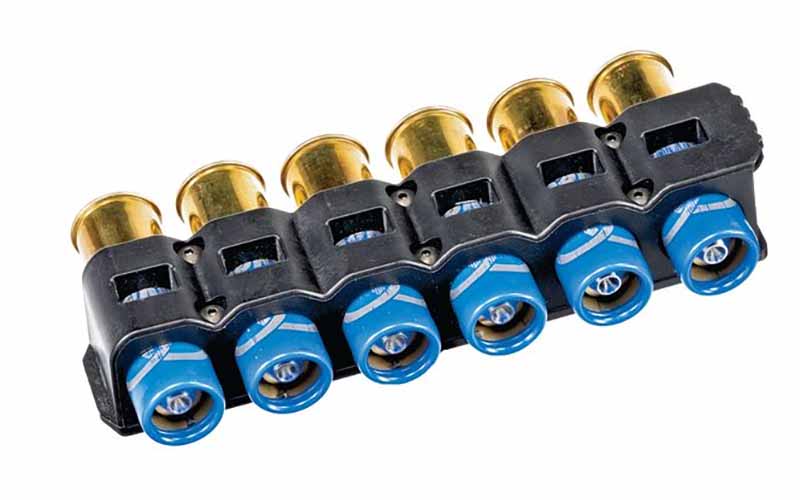
A 12 gauge is generally the right call here because ammunition, parts and even the guns themselves are more widely available. That isn’t to say that a 20 gauge can’t serve you well, but don’t expect the recoil to be substantially lighter; a lighter gun that’s easier to hold is also going to soak up less recoil.
Semi-Auto Or Pump Action?
Although obvious action choices are semi-auto and pump-action, there are also lever-action shotguns as well as the very simple break-actions to consider. Break-action shotguns are less than ideal when you realize that most home invasions involve two or three people, and lever-action shotguns are finicky at best. That leaves us with the good ol’ pump and the semi-auto, but each have their own unique pros and cons.
A pump-action is the most common choice due to overall cost and availability. Accessories are easy to find, and getting a nice used police trade-in can net you a bargain. If you choose a pump, make sure you practice with it often, learn to manage the recoil and get in the habit of racking that action every time you pull the trigger.
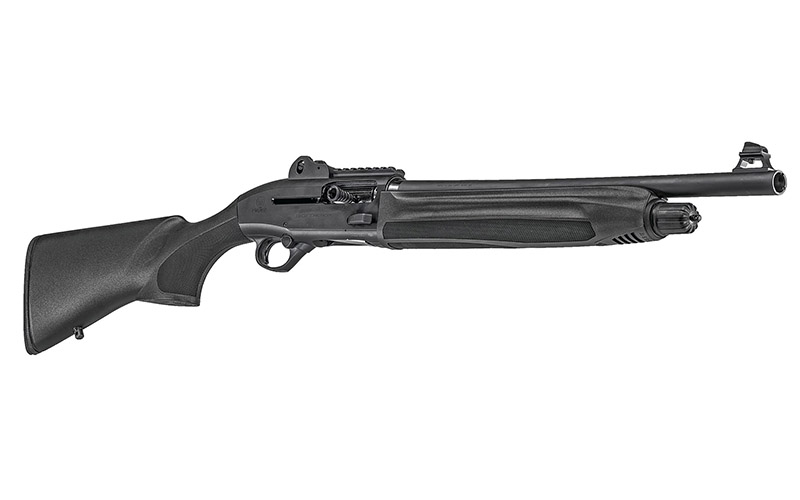
A semi-auto is going to shoot softer and be easier for those who don’t practice with a shotgun often, but it’s also a lot easier to outrun your headlights with one or have it go dry on you unexpectedly. Often, the largest objections to a semi-auto are that they can be finicky with ammo, and they’re significantly more expensive than the manually operated pump action.
Home Defense Shotgun Enhancements
Adding some doodads to the shotgun is going to make it easier to use under high stress levels, but make sure you’re doing it for the right reasons. A defensive gun should be purposeful; you can leave the fancy parts to your range toys.
Replace The Stock
Shorter-than-average humans like myself are well-served by replacing the stock on a shotgun intended for defensive. Being able to run the action with room to spare, in any odd position I might find myself, hinges on the stock’s length of pull. A nice byproduct of the need for a shorter stock is that the Magpul SGA stock, which I put on nearly every shotgun, adds a sling attachment point as well as the ability to fit different cheek risers.

On more than one occasion, I’ve short-stroked the gun when running it quickly because the stock was too long—the last thing I want is for that to happen when defending against an aggressor. Switching to a stock with a reduced length isn’t going to remove the possibility of a short-stroked action, but it happens far less often.
Shed Some Light On Things
Seeing things clearly is mandatory, because statistics prove that most home-invasions happen at night. There are a ton of options for adding some illumination to your gun, ranging from a cheap flashlight mount, on up to purpose-built forends with a built-in light.

I generally prefer a forend with an integrated light like the Streamlight TL-Racker or SureFire’s DSF weapon light. The Streamlight offering is significantly brighter with 1,000 lumens to the SureFire’s 600 while remaining cheaper, but there’s a slight build quality trade-off.
There are even forend replacements, like the Magpul M-Lok forend, that allow you to mount a more traditional light without clamping something to your barrel or mag tube. If you have an oddball shotgun, your only option for a light may be a barrel clamp and a high-quality 1-inch flashlight.

Bead, Ghost Ring, Rifle Or Red-Dot?
It might not be a bad idea to upgrade that bead sight on your gun to something a bit easier to see in low light. The best bang for your buck is going to be adding a tritium XS Sights DXT Big Dot sight to your gun. Want to go further than that? Adding a ghost ring rear, or even stepping up to a red-dot sight, is possible.
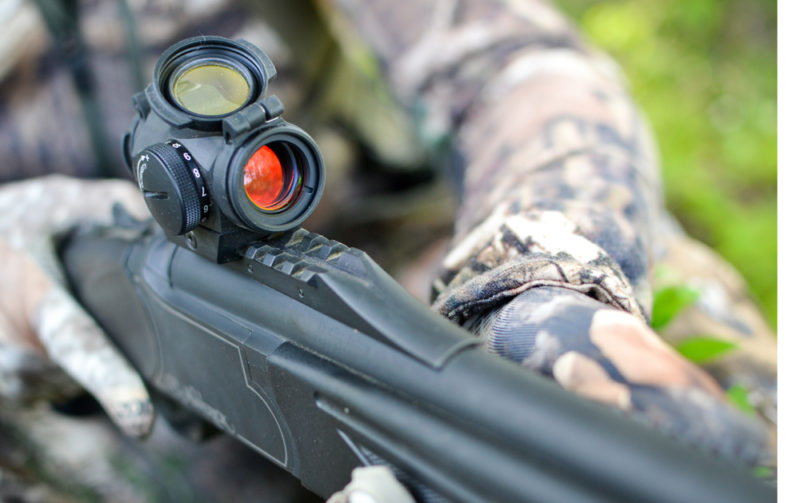
Many of the shotguns on the shelf today have the ability to slap a rail section to the top of the receiver, which will work in a pinch but is far from ideal. Purpose-built products, like the Aridus Industries CROM mount or the Scalarworks Sync, are great options if you want a rugged optic mount for your shotty.
Slings, Safeties And Small Enhancements
Do you need a sling for a home-defense shotgun? Maybe. It really depends on your needs. No sling is preferable; the fewer things to get snagged the better. I might suggest a single-point sling if there’s a possibility I might need to pick a child up or use both hands.
To round out the mods, small parts like enlarged safeties and enhanced followers are a good place to finish. Since I prefer a cruiser-ready configuration, an enlarged safety isn’t as important for me as it may be for those who keep a shell chambered.
Feeding The Gun
One of the largest downsides to using a home defense shotgun is the greatly reduced capacity over modern semi-auto pistols or mag-fed rifles. Adding some form of onboard ammunition carrier, such as a side-saddle ammo carrier, is a must.
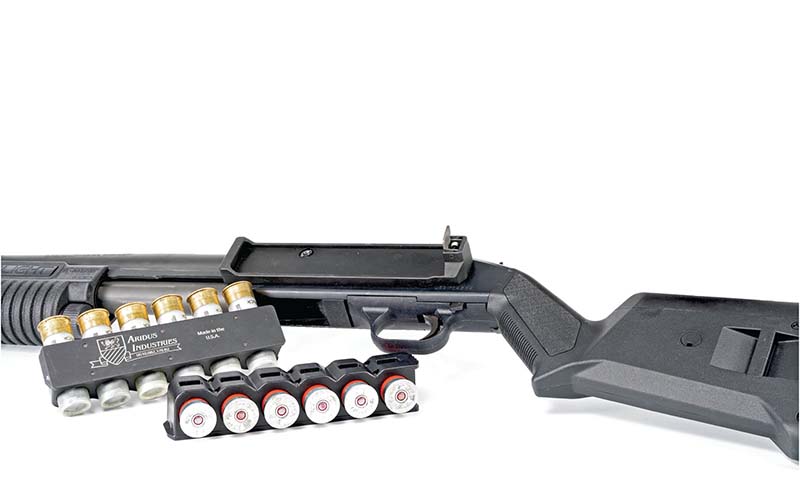
Cumbersome ammunition bandoleers and slings with shell loops aren’t as fast to load from, and they oftentimes don’t retain the shells well, making them less than ideal. Besides that, they tangle easily and catch on things … especially in the dark. If you feel you need more ammo than a side-saddle holds, Velcro cards or an Aridus Industries quick-detach carrier are good options to replenish your onboard ammunition.
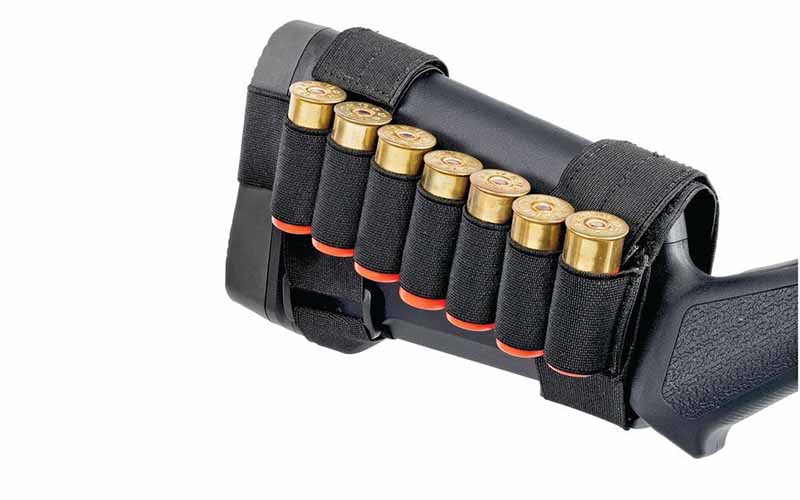
Home Defense Shotgun Storage
Should you keep a shell chambered or is it better to keep the shotgun with a full mag tube, empty chamber and the hammer down? That’s personal preference. You might be influenced by the fact that most shotguns don’t have a firing pin block and instead rely on a spring to keep the firing pin retracted—I know I was.
While I’m generally a round-in-the-chamber kinda dude with rifles and pistols, I’ve heard enough horror stories from folks who teach shotgun classes—as well as buddies in law enforcement—to sway me toward keeping an empty chamber when the gun is stowed.
Lock It Up!
It should go without saying that putting the gun on a top shelf with an empty chamber isn’t enough. Find a way to lock up your home defense shotgun that’s easy to access. Tons of options out there will make gaining access to the gun much harder for a kid or a thief.
A bracket-type wall lock will run you a couple hundred dollars, but this design presents some challenges if you have optics or a side saddle. Hornady’s Rapid RFID wall lock is worth a look, as is the cheaper from ShotLock that doesn’t rely on newfangled RFID tags to unlock it.
Don’t discount an under-bed safe like the one from SnapSafe … or even a very small gun locker in your bedroom closet.
If I Could Have Only One
The shotgun is a wonderful defensive tool that can also put meat on the table in a pinch. If I was forced to get rid of all my guns with the exception of only one, a 12 gauge of some type is likely the one that makes the cut. It might suck as a concealed firearm, but in regard to everything else you could want from a defensive firearm—a 12 gauge will do well … and then some.
A shotgun is going to treat you right … as long as you don’t buy into the myths. Set your gun up right, choose the right ammo and verify it patterns well.
Editor's Note: This article originally appeared in the May 2021 issue of Gun Digest the Magazine.
Mastering Shotguns: Guides and Tutorials
- Best AR-12 Shotgun – Buyer’s Guide and Top Recommendations
- Buyer's Guide: Best 410 Shotguns
- Best Budget Over Under Shotgun – A Buyer's Guide
- Semi Automatic Shotgun Guide – Scatterguns For The Field And Defense
- Buyer's Guide: Best Double Barrel Shotguns
- History of 8 Gauge Shotguns – From Hunting to Obsolescence
- Best Tactical Shotgun for Home Defense and More
- Benefits of Lever Action Shotguns
- How To Choose a Pump Shotgun – A Buyer's Guide
- Best Bullpup Shotguns – Best Options for Self-Defense

Next Step: Get your FREE Printable Target Pack
Enhance your shooting precision with our 62 MOA Targets, perfect for rifles and handguns. Crafted in collaboration with Storm Tactical for accuracy and versatility.
Subscribe to the Gun Digest email newsletter and get your downloadable target pack sent straight to your inbox. Stay updated with the latest firearms info in the industry.

![Best Concealed Carry Guns In 2025 [Field Tested] Wilson Combat EDC X9S 1](https://gundigest.com/wp-content/uploads/Wilson-Combat-EDC-X9S-1-324x160.jpg)


![Best 9mm Carbine: Affordable PCCs [Tested] Ruger Carbine Shooting](https://gundigest.com/wp-content/uploads/Ruger-Carbine-Shooting-100x70.jpg)
![Best AR-15: Top Options Available Today [Field Tested] Harrington and Richardson PSA XM177E2 feature](https://gundigest.com/wp-content/uploads/Harrington-and-Richardson-PSA-XM177E2-feature-100x70.jpg)

I’m kind fond of my Benelli M1 with short barrel, long magazine, pistol grip stock and bayonet lug (in case I’d want to employ my US M9 bayonet to, er, save ammo).